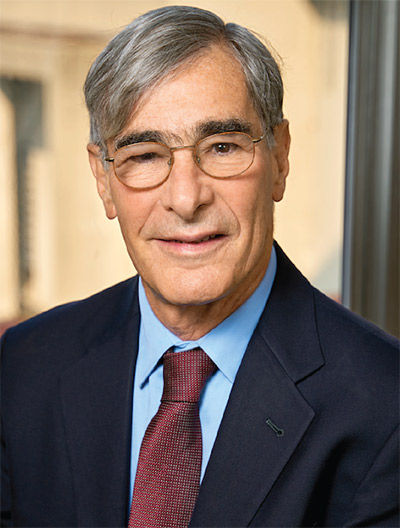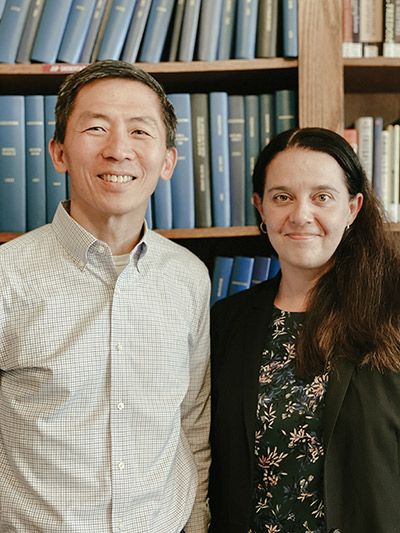By Gwyneth K. Shaw
The federal clerkship hiring process is famously high stress and opaque — and a near certain career-maker for those who nab a coveted spot.
But the demographics of these clerks lag even the composition of law school cohorts, despite years of good intentions and earnest effort. Informal studies show the ranks are dominated by white men who went to top law schools, particularly Yale and Harvard.

Researchers from the Berkeley Judicial Institute (BJI) set out to understand why the mix has been so difficult to change. In a groundbreaking empirical study featuring interviews with 50 federal judges, they teased out some trends and potential new practices for hiring — and found that “diversity” doesn’t mean the same thing to every judge.
Their article, “Law Clerk Selection and Diversity: Insights from Fifty Sitting Judges of the Federal Courts of Appeals,” has just been published in the Harvard Law Review.
Meeting the mission
Retired Judge Jeremy Fogel, the institute’s founding executive director, joined Pepperdine Law Professor Mary S. Hoopes Ph.D. ’20 and California Supreme Court Associate Justice Goodwin Liu on the project, leveraging their connections to both design the study for maximum participation and land the interviews.
Fogel is a former U.S. District Judge for the Northern District of California who spent seven years leading the Federal Judicial Center, the federal courts’ education and research agency. Liu, a former Berkeley Law professor, clerked for U.S. Supreme Court Justice Ruth Bader Ginsburg. Hoopes, a former Supreme Court Fellow and federal judicial clerk, earned her Ph.D. from Berkeley Law’s Jurisprudence & Social Policy Program and was BJI’s research director when the study began.
The study is the latest impactful contribution from BJI, founded in 2018 to help build bridges between judges and academia to foster an ethical, resilient, and independent judiciary. In just the past year, Fogel has become an outspoken advocate for a formal code of ethics for the Supreme Court — including testifying before a U.S. Senate committee — and the institute has run events bringing judges together with peers as well as journalists, policy advocates, and even literature professors.
The researchers’ combined experiences gave them a unique advantage, Fogel says.
“Two of us have many years of judicial experience, and all of us have trusting relationships in the federal courts,” he says. “Those relationships, and the confidential interview format used instead of a more typical survey, allowed the participating judges to speak candidly and thoughtfully about their hiring processes.
“Their contributions not only reflect the complexity and sensitivity of the issues, but also underlie the concrete best practices we propose.”
Learn more about the study, and hear the BJI researchers talk about their work, in this episode of “More Just,” a podcast hosted by Berkeley Law Dean Erwin Chemerinsky.
How judges hire — and whom they choose — has a big impact on clerks’ careers as well as the legal profession. A clerkship, particularly at the appeals court level and the Supreme Court, can earn young lawyers six-figure bonuses as well as reputational cachet. These plum positions also become a highlight in the biographies of many legal academics, politicians, and local, state, and federal judges.
That’s a big reason why Fogel, Hoopes, and Liu set out to talk to judges about their hiring methods — and why their empirical findings matter.
“Diversity among judges affects diversity among clerks,” they write.
New insights
The group of judges interviewed for the study included 35 men and 15 women; 32 judges appointed by Democrats and 18 appointed by Republicans; and 30 who identified as Black, Asian American, or Hispanic. The interviews, Fogel, Hoopes, and Liu write, yielded, “rich and candid insights not captured by prior surveys.”

Judges said they value diversity, although the dimensions vary, and try to build an ensemble of complementary clerks in each cohort. Republican appointees tend to weigh socioeconomic diversity more heavily than their Democratically-appointed counterparts. And judges who prioritized racial diversity reported difficulty hiring Black and Hispanic clerks.
“I’ve seen a broad range of talent. … I don’t care where students went to school. You have to do your homework and dig underneath the transcript, figure out the curve, look beneath the law review editor titles,” one Black judge told the researchers. “I drill deeper. … There’s no monopoly over brains or qualifications; it’s a question of opportunity.”
The interviews showed that judges who graduated from law schools outside the top 20 in the U.S. News & World Report rankings are significantly more likely than other judges to hire clerks from schools beyond that list. Almost all the judges in the interview group said they consider gender, with many reporting specific goals for gender balance — and Republican appointees said it was harder to recruit women than judges appointed by Democrats.
“The judges who hired the largest number of minority clerks are the ones who make a conscious effort to bring diverse candidates into their hiring pool, or value candidates based on components other than grades or class rank,” Fogel says.
The study lays out a number of suggestions for improving diversity in the clerkship ranks, with transparency as a major component, and urges judges to break the “cultural norm of silence” around hiring.
“Judges are likely to be most receptive to the views and practices of their peers,” Fogel, Hoopes, and Liu write.
Fogel adds the study is particularly meaningful in light of the Supreme Court’s holding last year that affirmative action programs for college admissions based on race are unconstitutional. The kind of outreach some judges reported doing to attract a more diverse pool of applicants is untouched by that decision — and, in fact, some schools are doing similar work.
Judges can do the same to move the needle on diversity.
“Most of the judges we interviewed said that they wanted to hire law clerks from diverse backgrounds,” Fogel says. “But most of them also said that they value many different kinds of diversity, including diversity with respect to the particular challenges applicants have faced in their lives, which might be a result not only of race but also of socioeconomic and personal factors.
“This more holistic way of looking at applicants seems especially useful and salient now.”